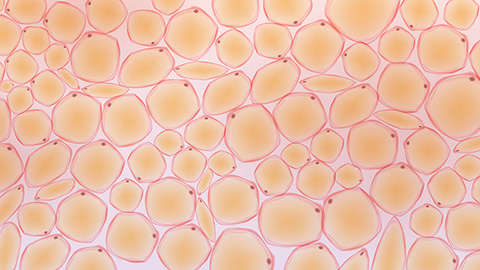Sex and diet shape fat tissue lipid profiles in obesity
In obesity, adipose tissue expands and accumulates, driving chronic inflammation. Previous research showed that sex steroid hormones can influence adipose tissue distribution, accumulation and immune responses in men and women. Changes in lipid composition in the visceral or gonadal white adipose tissue, or GWAT, during obesity can drive immune cell accumulation and boost proinflammatory mediators. Prior studies revealed sex differences in GWAT lipid species in obese mice, but scientists still do not understand the exact role of sex hormones in lipid composition.

In a recent study in the Journal of Lipid Research, Mita Varghese and a team of researchers at the University of Michigan investigated the GWAT lipid profiles in obese mice and mice with their gonads surgically removed, or GX mice. In an untargeted lipidomics analysis where they comprehensively analyzed all lipids, they found sex differences in several lipid species, such as phospholipids and sphingolipids, which are important cell membrane components. Obese males had significantly more precursor fatty acids than females and GX mice. Targeted analysis revealed sex differences in polyunsaturated fatty acids, or PUFAs, with males showing a significantly higher omega-6 to omega-3 ratio. They also found diet-driven differences in oxylipins, inflammation-linked lipids, which were higher in both male and female obese mice than in lean mice.
This study suggests that sex hormone levels and diet equally induce inflammation and changes in lipid composition in obesity. Future studies include further confirming lipid profiles and understanding how sex differences arise in obesity.
Enjoy reading ASBMB Today?
Become a member to receive the print edition four times a year and the digital edition monthly.
Learn moreGet the latest from ASBMB Today
Enter your email address, and we’ll send you a weekly email with recent articles, interviews and more.
Latest in Science
Science highlights or most popular articles

Mapping fentanyl’s cellular footprint
Using a new imaging method, researchers at State University of New York at Buffalo traced fentanyl’s effects inside brain immune cells, revealing how the drug alters lipid droplets, pointing to new paths for addiction diagnostics.

Designing life’s building blocks with AI
Tanja Kortemme, a professor at the University of California, San Francisco, will discuss her research using computational biology to engineer proteins at the 2026 ASBMB Annual Meeting.

Cholesterol as a novel biomarker for Fragile X syndrome
Researchers in Quebec identified lower levels of a brain cholesterol metabolite, 24-hydroxycholesterol, in patients with fragile X syndrome, a finding that could provide a simple blood-based biomarker for understanding and managing the condition.

How lipid metabolism shapes sperm development
Researchers at Hokkaido University identify the enzyme behind a key lipid in sperm development. The findings reveal how seminolipids shape sperm formation and may inform future diagnostics and treatments for male infertility.

Mass spec method captures proteins in native membranes
Yale scientists developed a mass spec protocol that keeps proteins in their native environment, detects intact protein complexes and tracks drug binding, offering a clearer view of membrane biology.

Laser-assisted cryoEM method preserves protein structure
University of Wisconsin–Madison researchers devised a method that prevents protein compaction during cryoEM prep, restoring natural structure for mass spec studies. The approach could expand high-resolution imaging to more complex protein systems.

